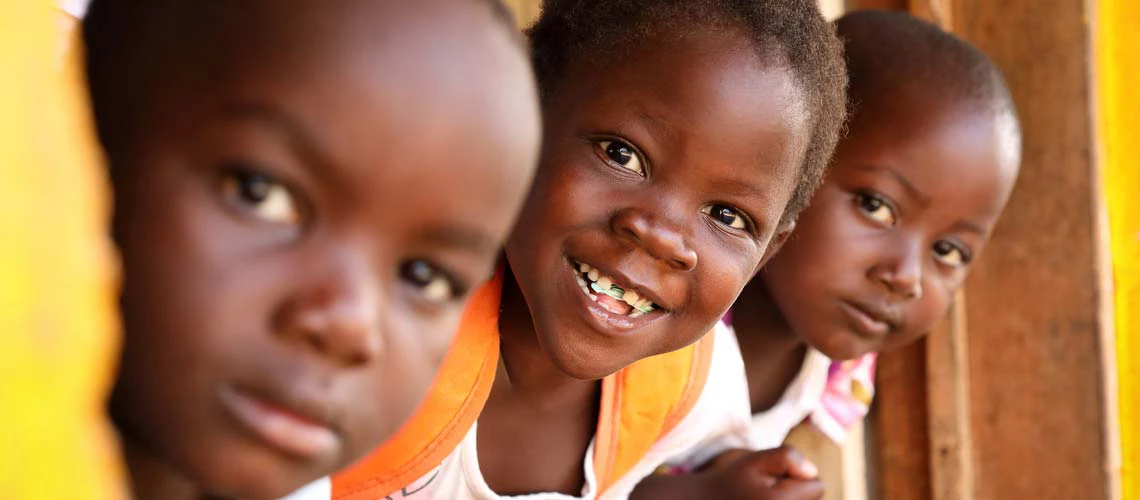 NKHOTAKOTA, MALAWI
NKHOTAKOTA, MALAWI
After a short rebound in 2021, Malawi entered a renewed slump in 2022. Its economy is seriously weakened by a series of external shocks and severe macro-fiscal imbalances that have impacted growth and efforts at poverty reduction. As the macroeconomic crisis has worsened, the need to move toward greater economic stability has become increasingly urgent. With just over half of the Malawian population of almost 20 million (2021, World Bank) living in poverty, stalled structural transformation, and high vulnerability to climate change, Malawi’s economic slowdown will compound an already difficult situation for its citizens.
The following seven figures from the World Bank’s new Malawi Economic Monitor (December 2022) highlight the impact of sustained macroeconomic imbalances on the country and suggest how Malawi could stabilise its economy to improve growth.
1. GDP growth is projected to remain low
After its tepid rebound in 2021, GDP growth is projected to slow to 0.9% in 2022, increasing to 2.2% in 2023—still significantly lower than its pre-pandemic trajectory (Figure 1). These growth rates constitute a per-capita contraction in GDP. External shocks and, in particular, the impacts of the war in Ukraine and of two cyclones that have affected agricultural production, together with a balance-of-payments crisis (see 2), are at the core of this. Economic growth is likely to be just a quarter of the sub-Saharan Africa average in 2022 and below the regional growth rate in 2023.
Figure 1: Overall economic growth remains weak
Real GDP growth by sector (%)

Note: * estimates, # forecasts.
Source: World Bank Macro Poverty Outlook (2022b).
2. Foreign exchange shortages and rising input costs negatively affect the private sector
Malawi’s balance of payment crisis became more acute over the course of 2022, with foreign exchange widely unavailable. This led to still ongoing shortages of imported goods, illustrated by long queues at filling stations and lack of imported medicines in hospitals. Imports necessary for industrial production were also difficult to obtain. The latest World Bank Business Pulse Survey (BPS) found that two-thirds of the 1,200 small businesses surveyed in October 2022 reported a decrease in sales compared with one year earlier (Figure 2). A full 72% saw rising input costs and more than three-quarters the unavailability of foreign exchange, as threats to their profitability. Addressing the acute foreign exchange shortage is therefore critical to supporting the private sector.
Figure 2: Rising input costs and foreign exchange shortages are a strain for businesses
Share of BPS respondents estimating the effect of increased non-labor input costs and decreased foreign exchange availability since the beginning of 2022 on net operating profits*

Note: *Catastrophic decrease is defined as a decrease that prompts the discontinuation of some business activity.
Source: World Bank BPS (2022a).
3. Headline inflation has risen to its highest level since June 2013
At 26.7% as of October 2022 (Figure 3), year-on-year inflation in Malawi is well above the Central Bank’s target range (3 to 7%). It is also much higher than in neighbouring countries. Food prices are on an even steeper trajectory, increasing by 34.5%. A doubling of maize prices—Malawi's main staple food—creates an enormous financial burden for those who are already poor and vulnerable. Moderating inflation will require decisive action on both the demand and supply sides, including lowering levels of overall money growth.
Figure 3: Inflation has reached the highest levels since June 2013
(%, y-o-y)

Source: World Bank with data from National Statistical Office (NSO) of Malawi.
4. Malawi’s public debt has grown to unsustainable levels as fiscal deficits have increased
Driven by sustained fiscal deficits and the uptake of high-interest commercial debt, Malawi’s external debt is now in distress. The fiscal deficit reached 8.8% of GDP in FY2021/22, while public debt was estimated to have reached 76.6% of GDP by the end of 2022 (Figure 4). The high interest rates charged on this debt mean that government spending on essential public services has been constrained. Roughly a third of domestic revenue will be needed for interest expenditure alone in FY2022/23.
The latest joint World Bank–IMF Debt Sustainability Analysis (November 2022) assesses current debt levels as unsustainable with current policies, though the implementation of the government’s debt strategy could offer some respite. Prioritizing and scaling back expenditure on relatively inefficient programs, such as the Affordable Inputs Programme (a fertilizer subsidy scheme), could protect the government’s essential functions while debt is brought back to sustainable levels.
Fiscal consolidation and a move towards self-reliance, as stipulated in the Malawi 2063 Agenda, could benefit from a more credible budget, through better planning and budget discipline, including public financial management reforms. The government is pursuing restructuring and improving debt management processes toward this end.
Figure 4: Malawi’s public debt has grown as fiscal deficits have increased
As a share of GDP

Source: World Bank calculations, with data from Reserve Bank of Malawi (RBM) and Ministry of Finance and Economic Affairs.
5. In the face of severe foreign exchange shortages, imports have declined dramatically
Imports began declining in early 2022 and collapsed in May 2022, reflecting the impact of foreign exchange shortages (Figure 5). In turn, the trade deficit continued to contract. While alleviating the external balance, the unavailability of foreign exchange led to shortages of imported goods. The overall reduction in imports is primarily a result of a decline in imports for goods other than fuel and fertilizer (for example, intermediate inputs required for producers such as raw materials), and consumer goods (Figure 6). Fuel imports were stable through August, protected by Central Bank-supported credit facilities, but then declined.
Figure 5: In the face of severe foreign exchange shortages, imports have declined dramatically
Seasonally adjusted trade balance (real 01/2022 MWK billion)
Figure 6: The recent import collapse has in particular impacted non-fuel imports
Monthly import values (real 01/2022 MWK billion)

Note: SA = seasonally adjusted.
Source: World Bank staff calculations based on NSO data.
6. Official foreign exchange reserves remain low, caused by a structural trade deficit and rising debt-servicing payments to external commercial creditors
Gross foreign exchange reserves decreased by more than half, from $847 million in December 2019, and by one-third over the year from $605 million in August 2021, to $326 million in October 2022, or around 1.3 months of import cover, much lower than the recommended adequacy level of 3.9 months of import coverage for a credit-constrained economy (Figure 7). Building foreign reserves is critical to ensure Malawi has the sufficient liquidity to meet obligations and manage shocks.
Figure 7: Foreign reserves remain low
Official gross and net reserves, months import cover

Notes: Net reserves subtract predetermined short-term drains, such as short-term swaps
Source: World Bank staff calculations based on RBM data.
These seven figures underscore the need for urgent action to stabilise the economy and enhance growth. The government took important steps to address the crisis over the course of 2022. This included measures to reduce the fiscal and external deficit, including initiating discussions on debt restructuring, the announcement of a less expensive and better targeted agriculture subsidy program, and the implementation of the 2022 Public Finance Management Act.
In parallel, support to the poorest Malawians has been significantly improved through the expansion of cash transfer programs and climate-smart public works programs. Finally, moving forward a key factor will be to support export competitiveness and overall, market-driven growth in the economy, in particular through efforts to support agricultural commercialization and rural job creation.
References:
- IMF. 2022. Malawi. Request for an Arrangement under the Rapid Credit Facility and Staff Monitored Program with Executive Board Involvement. Washington, DC: IMF.
- World Bank. 2022a. COVID-19 – Business Pulse Survey 5th Wave. Washington, DC: World Bank.
- World Bank. 2022b. Macro Poverty Outlook. Washington, DC: World Bank.
- World Bank. 2022c. Malawi Economic Monitor: Planning Beyond the Next Harvest: Advancing Economic Stability and Agricultural Commercialization. Washington, DC: World Bank.





Join the Conversation